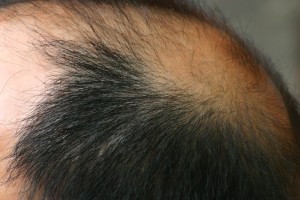Overview
Hair loss and baldness for men are two problems that are not so easily remedied. Using a hat, wigs, and toupees are temporary solutions, and can be embarrassing if these suddenly get detached to reveal the person’s bald head. These can also cause psychological and emotional problems.
Men can feel as if they are losing their virility, and for young men who experience male pattern baldness early, it can make them feel as if they are aging rapidly, especially since baldness is often associated with the older generation of people.
Fortunately, there are a few methods available that can fix this problem. And one of these is hair transplant surgery.
What is hair transplant surgery?
Hair transplant surgery is a procedure that takes sections of skin that contain working hair follicles from a key donor area of the body, and moves them to the balding parts of the scalp, or in other patches of the body that require hair transplants. This is usually used to treat male pattern baldness, but it can also be used to restore hair growth in scarred areas, beard areas, eyebrows, even eyelashes.
The technology has advanced so greatly that today, surgeons are able to successfully transplant skin with follicles, achieving a very natural appearance so much so that it mimics the exact same number of hairs growing per follicle in the bald area.
This makes hair transplant surgery the ideal solution for hair loss and baldness.
Hair transplant procedure
There are two ways in which the hair transplant procedure can be performed. The first involves a procedure called strip harvesting.
First, the patient consults with the doctor to show the balding areas that need to be addressed. During this phase, the surgeon will proceed to take the proper measurements to ensure the correct amount of skin is harvested. The donor area, usually the back of the head, is trimmed and marked. Once the final measurements are ensured, the donor area is given a local anesthesia, and the skin containing the hair follicles are removed, and the incisions are closed by sutures.
Next, the strip is cut into small pieces called grafts, which contain the hair follicles. These grafts are transplanted into the balding area through a series of tiny incisions, and left to heal and begin hair growth.
The other method is called follicular unit extraction, and in this method, individual follicles are removed while the patient is under a local anesthesia. This micro removal involves making very small punch-like holes in order to remove individual follicles. These will then be inserted into the target area using a micro blade. This method is less-invasive, and requires no follow-up treatments such as the removal of stitches, and cause very little scarring and post-surgery pain.
Risks, complications, and recovery time
Depending on the method employed, there are different risks and possible complications that can occur. Infection is always a possibility, especially for strip harvesting, with its long incisions. Swelling can also occur, but can be eased by the use of anti-swelling medication. Itching can happen, and when it does, it is important that patients fight the urge to scratch the area, as this can cause bleeding and hair loss.
Strip harvesting has about one to two weeks of recovery time, while FUE surgery has around five to seven days.

